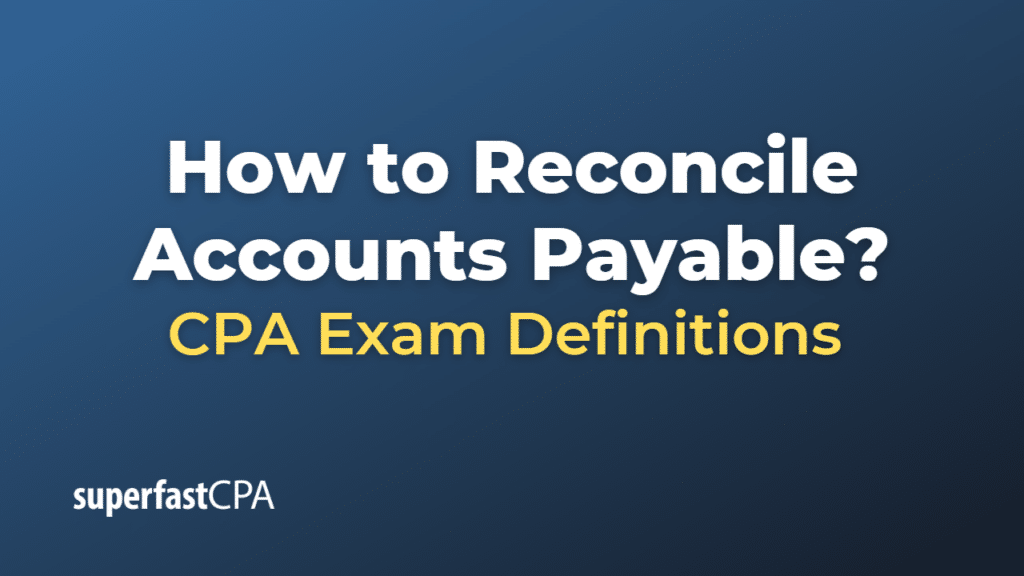How to Reconcile Accounts Payable
Reconciliation of accounts payable involves comparing your company’s internal records of amounts owed to suppliers (as per the accounts payable ledger) with the statements or invoices you receive from those suppliers. This helps to ensure that your records are accurate and that you’re not missing any bills or recording bills that you’ve already paid.
Here are the steps to reconcile accounts payable:
- Prepare: Gather all supplier invoices, statements, and your company’s accounts payable ledger for the same period.
- Compare Invoices to Ledger: Compare each supplier’s invoice or statement to your accounts payable ledger. Look for discrepancies such as invoices recorded in your ledger that don’t have a corresponding supplier invoice or statement, or supplier invoices that aren’t recorded in your ledger.
- Identify Discrepancies: Investigate any discrepancies. You may need to contact suppliers for missing invoices or clarify any billing errors. If you have invoices in your ledger that don’t match with a supplier’s invoice, you may have already paid the invoice, or it might have been recorded in error.
- Adjust Accounts Payable Ledger: Make necessary adjustments to your accounts payable ledger based on your investigation. This could involve adding missing invoices or removing ones that were recorded in error or already paid.
- Verify Totals: Once all adjustments have been made, the total of your adjusted accounts payable ledger should match the total amount owed according to your supplier invoices and statements. If the totals still don’t match, you’ll need to recheck your work.
- Document the Reconciliation: Document the reconciliation process, including any discrepancies found and adjustments made. This documentation can be valuable for audits and future reference.
By following these steps, you can ensure that your accounts payable ledger is accurate and up-to-date, which can help prevent late payments, double payments, and other errors.
Example of How to Reconcile Accounts Payable
Imagine your company has three suppliers: Supplier A, Supplier B, and Supplier C. As of June 30, 2023, your company’s accounts payable ledger shows the following balances owed to these suppliers:
- Supplier A: $1,000
- Supplier B: $1,500
- Supplier C: $2,000
- Total: $4,500
However, upon receiving the statements from these suppliers, they show the following balances:
- Supplier A: $1,000
- Supplier B: $1,000
- Supplier C: $2,500
By comparing these, we can see that there’s a discrepancy with Suppliers B and C. Here’s how you might handle this:
Supplier B:
- Investigate the discrepancy: You find that you have mistakenly entered an extra $500 invoice in your ledger.
- Adjust the accounts payable ledger: Correct the error by reducing the balance of Supplier B to $1,000.
Supplier C:
- Investigate the discrepancy: You find a $500 invoice from Supplier C that you missed recording in your ledger.
- Adjust the accounts payable ledger: Correct the error by increasing the balance of Supplier C to $2,500.
After these adjustments, your revised accounts payable ledger matches the suppliers’ statements:
- Supplier A: $1,000
- Supplier B: $1,000 (adjusted from $1,500)
- Supplier C: $2,500 (adjusted from $2,000)
- Total: $4,500
Remember, this is a simplified example. In reality, a company might have many more suppliers, and the accounts payable reconciliation process might be more complex and involve larger amounts. The general steps, however, remain the same.













